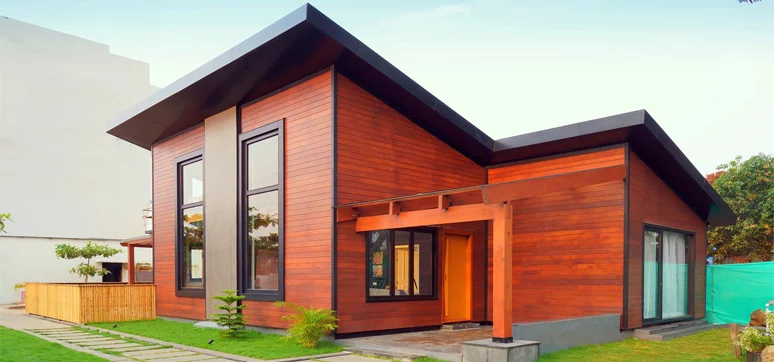Please tell us about Canadian Wood.
FII popularly known as Canadian Wood in India, is a Crown agency of the government of British Columbia (B.C.), the westernmost province of Canada. FII is a not-for-profit, a non-commercial organisation mandated to promote B.C. forest products in the offshore markets. Ever since Canadian Wood set up an office in India, it has been actively engaged in educating the target audiences about B.C., Canada as a long-term source of legally harvested, certified wood from sustainably managed forests, which is available in lumber form.
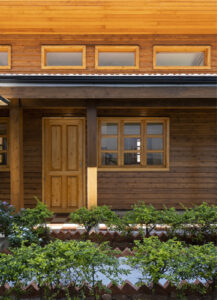
This lumber is duly graded, sized and seasoned, and is in almost ready-to-use condition. Canadian Wood also shares knowledge and best practices through active engagement with the woodworking factories and professionals by conducting seminars and training workshops. Besides this, it is also engaged in handholding and providing technical support to the reman industry as well as structural projects.
When did you establish the company in India and how do you find the Indian market for wood?
Canadian Wood started its innings in India in the FY-2013-14 by setting up an office and a display centre alongside to showcase products made by Indian manufacturers using Canadian Wood species. Later in 2016, we added two satellite offices in Gurugram and Bengaluru for more effective coverage of northern and southern India by minimising response time. India is well known for its longstanding wood culture but is a fibre deficit nation and thus has to rely on imports to satisfy demand.
There existed a traditional preference for dark and heavy wood. However, the market has undergone a huge change in the last 6-7 years and today conifers which are much lighter in weight & shade and are easier to work with, are increasingly finding favour with manufacturers in more and more products and applications. Today, conifers constitute 50% of the total wood imported, we thus see a bright future for Canadian Wood in India.

Wood in India has been traditionally used in applications such as furniture, millwork, doors/ windows, and door/window frames, etc. Structural applications of wood have been limited due to the missing skillsets. However, the keen interest showed lately by the market in our structural demo projects is very heartening and is encouraging us to help develop local skillsets and an eco-system with like-minded professionals to make structural projects in wood commercially viable in India.
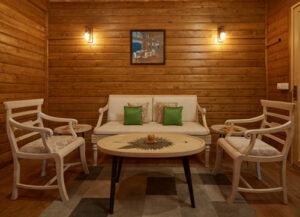
Currently, there are over 40 stockists in 23 cities across India, who are stocking and selling Canadian Wood species. Besides that, we can proudly cite some of the leading manufacturers across India, importing and using Canadian Wood species in a wide variety of products.
What are some of the most innovative products from Canadian Wood?
Canadian Wood promotes five distinct wood species (with excellent strength-to-weight ratio) from B.C. Canada in the Indian market, viz.
- SPF (Spruce-Pine-Fir)
- Western hemlock
- Douglas-fir
- Yellow cedar
- Western red cedar.
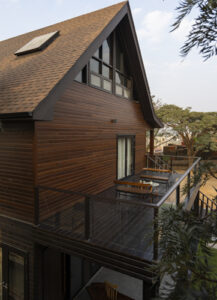
Each of these species has unique properties and is suitable for a variety of reman and structural applications. For instance, SPF is stress rated and considered ideal for building with wood; Western hemlock is well-known for its easy workability and good staining properties thus making it a popular choice of furniture manufacturers including the export-oriented manufacturing hubs at Jodhpur, Jaipur, and Moradabad, catering to leading brands in North America, Europe, Australia and New Zealand. Douglas-fir is coveted by the mass timber manufacturers, the yellow and red cedars are naturally durable species scoring high on being able to withstand insects, decay, and other natural elements.
There is a rising interest amongst our stakeholders and the end consumers alike for developing country homes, farmhouses, holiday homes and resorts using wood in the countryside, amongst the hills or along the coast. Reputed architects, developers, and hospitality professionals are increasingly engaged in structural projects employing wood from Canadian Wood.
How do you ensure the quality of the products? Please brief on the tests and certification?
Few places on earth can match the diversity and richness of Canada’s forests. Forests are an important part of Canada’s natural ecosystem and central to its economy being home to over 10% of the world’s total forest cover and 37% of the world’s total forest certification, making it the global leader in sustainable forest management by a huge margin over the next country in the certification hierarchy. In Canada, B.C. alone has 50 million hectares certified to at least one of the two internationally recognized certification programs: PEFC and FSC. These certifications offer the necessary assurance regarding the sourcing values and stringent measures intrinsic to the supply chain process of Canadian lumber we promote in India.
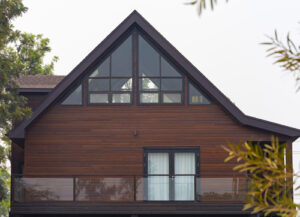
Forestry and wood processing in British Columbia and Canada are an inter-connected industries working in close harmony. This includes planting saplings and harvesting trees with modern, high-tech machinery and sophisticated wood processing plants making lumber. The entire cycle is planned around responsible resource management. Despite Canada being one of the largest exporters of lumber in the world, it has zero deforestation in the last three decades.
How does Canadian Wood check the issues of termites, expansion, and contraction due to extreme climatic conditions and absorption of moisture and fungal attacks?
Canadian Wood lumber is dimensionally stable as it comes from slow-growing mature trees from natural forests and not from plantations. It is duly graded, sized, and seasoned, thus avoiding wastage due to sorting at the manufacturer’s yard. Having said that, wood being a natural material can check, warp, and absorb moisture if not handled well while manufacturing products from it.

No wood in its natural condition is termite and waterproof, however as mentioned earlier, two of the Canadian Wood Species i.e., Yellow cedar and Western Red cedar are highly resistant to insects such as termites, decay caused by the fungus, etc. and other natural elements. It is thus important to avoid any shortcuts while manufacturing as well as using the coatings most appropriate for the application.
According to you what are the advantages of using wood for façade cladding and fenestration (doors & windows)?
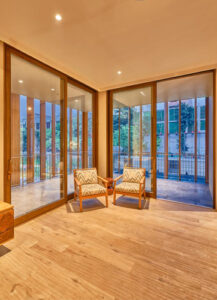
Wood is a natural material and hence good for the environment, as its warm appeal and aesthetic beauty is incomparable with any man-made material. Certified wood helps win LEED points for the projects. Properly manufactured, coated, and affixed cladding and panelling has stood the test of time and it lasts for decades. It is a bad conductor of both hot and cold hence good in our extreme weather conditions.
Indian Architecture has been using wood since ancient times. Wood is the most preferred material for doors and windows in India. However, the challenge today for modern Architects in India is the availability and price of quality wood. India is a price sensitive market. How is the market for your product in India?
It is a myth that good quality wood is not available, you get what you pay for. Having said that wood is still a very cost-effective raw material for doors/windows and door frames. Doors are still largely made of wood products, whether solid wood or flush doors using ply or Masonite skins. However, the windows market moved away towards UPVC & Aluminium in recent times purely because not many manufacturers upped their skillsets nor adopted the required technique or employed necessary hardware to ensure insulation which could shut out the noise, water, and dust as demanded by the clients.
Fortunately, of late, on account of customer demand, the market has begun to see a change with more and more wooden window manufacturers employing the required techniques and hardware to make windows delivering on the parameters demanded by the high-end clients who want to move away from artificial materials.

Many such manufacturers have already opted for Canadian Wood’s cedar species and have been making such windows successfully over the past 5 years. It is also heartening to see an increasing number of architects designing and specifying wooden windows in their high-end projects. I am confident that over time this will percolate down to more mainstream projects.
Tell us about your manufacturing facilities? Where are they located?
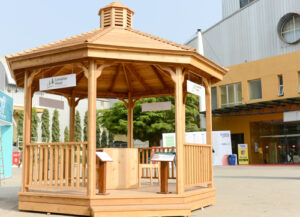
As mentioned in the beginning, we are a not-for-profit crown agency of B.C. Govt. engaged in the promotion of B.C. forest products in the offshore markets. We do not manufacture or sell anything ourselves but instead pave the road for B.C. lumber companies. B.C. forest products are manufactured in their automated plants located all over British Columbia, the westernmost province of Canada. We help connect traders and manufacturers in India with lumber companies in B.C. to source the required wood. If the requirement is not in container loads, then we connect them with Canadian Wood stockists in India.
Please throw some light on marketing strategies and distributor/dealer network?
As a practice, we do not ask or divulge information on strategies. It would perhaps suffice to say that we conduct wood trials with manufacturers, provide technical support and conduct educational seminars and training workshops to spread awareness about B.C., Canada and its species and their applications in India apart from handholding and connecting stakeholders in India with suppliers in B.C. Canada.
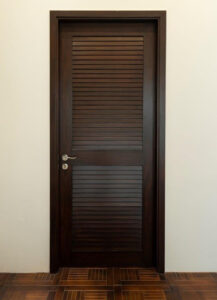
Post onset of the pandemic, we have made necessary adjustments in staying connected with and reaching out to our stakeholders and delivery of our program in India, as done in other markets in Asia and elsewhere. As of date, we have over 40 Canadian Wood stockists in 23 cities across India stocking and selling all five species.
Please share the details of a few of your major projects in India where your products are used innovatively?
All Canadian Wood species have unique properties that make them suitable for a range of applications. What we promote is not an end product, instead a raw material used by many manufacturers across India to make a large variety of products for domestic and export markets.
There are numerous projects across India both in reman and structural applications done by our stakeholders including wooden homes, furniture, doors, windows, door/window frames, etc. Thus, it is rather difficult to divulge few names and not talk about others.
We have projects done by our stakeholders in almost all the major cities and the states in south, west, and northern India. We are yet to open up Canadian Wood programme implementation in eastern India.
The projects done using Canadian Wood are well known hotels, restaurants, private villas and homes and resorts, etc. Just recently, Canadian Wood was involved in structural demo projects in Mysore, Bengaluru, Chennai, Goa and earlier in Himachal Pradesh. In addition, many commercial projects in reman and structural categories have been executed over the past 6-7 years across the country.

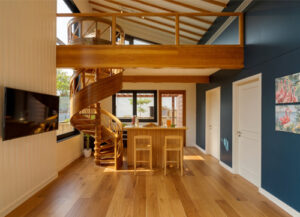
Please brief on Canadian Wood’s commitment and approach to sustainability?
By law, less than one percent of the forests are harvested annually in Canada. Reforestation is ensured by planting three saplings of the same species for every tree harvested from the same geography in order to preserve the existing eco-system. This commitment to forest regeneration results in two hundred million new seedlings planted every year ensuring replenished forests for future generations. Thus, all mills in B.C. Canada supply only certified lumber from such forests. Strict international certification standards such as PEFC & FSC, elaborated upon earlier further add additional assurance of the global protection of forest resources and make Canada a reliable and long-term sustainable source of wood and forest products.
